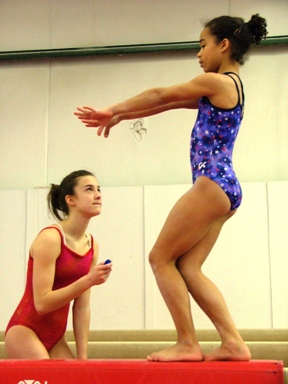 I would like to show you how TAGteach is a great teaching method for all kinds of learners in all kinds of areas. TAGteach is not only effective for children with autism and other disabilities, but also for sophisticated learners working on advanced academic and athletic skills.
I would like to show you how TAGteach is a great teaching method for all kinds of learners in all kinds of areas. TAGteach is not only effective for children with autism and other disabilities, but also for sophisticated learners working on advanced academic and athletic skills.
TAGteach (Teaching with Acoustical Guidance) is a scientifically-based teaching and communication method. It is based on the science of behavior, the same science underlying Applied Behavior Analysis (ABA), and involves the use of positive reinforcement to achieve behavior goals. The unique aspect of TAGteach is that it combines positive reinforcement with an acoustical event marker signal. The marker—the key communication tool used in the system—makes a distinctive “click” sound to mark a behavior at the time it occurs. The mark (the “tag”or “click”) means YES, YOU DID SOMETHING GOOD, and the absence of the tag means TRY AGAIN.
TAGteach has had a huge, positive impact on my family in teaching skills to my nonverbal son with severe autism. It has helped many other children with autism and other types of learners too. Yet I hear people say, “My child is too high-functioning for that. She has speech.” TAGteach offers much more than the event marker. The teaching protocol for TAGteach has five important features that are beneficial to all learners, whether low or high functioning. These are discussed below.
Start at the point of success
For starters, an important feature of TAGteach is that you start teaching at the “point of success.” This means that you start a teaching session with something the child can do, as opposed to something the child cannot do, or has not yet learned. When you start at the “point of success,” the child experiences success and achievement immediately. When a child has success and feels safe, she is willing to try the next step.
One step at a time
When the child has mastered the initial task, you can present the next step in the process. This should be something based on the Point of Success, but with a single small, new aspect added. The instructor should be able to describe the next step, or “tag point” in five words or less. This gives the learner a single, concrete task to focus on and complete. For example, when practicing the borrowing notation in subtraction, the tag point might be “cross out number to left.” When the learner has successfully completed the step, she earns a tag and she knows she succeeded.
Reinforce generously
Reinforce the child each time she completes a tag point with the audible tag and follow that up with a tangible reinforcer (sticker, treat, ticket in a jar or something else the child wants to earn). This builds the child’s confidence that you will reward success and this creates a good relationship between you and the child.
Observe the child’s reactions
Observe how the child handles a tag point. If the child struggles and cannot complete the task within three trials, it is time to re-assess. Look at the task sequence, break it down further, or go back and practice a previous tag point. Make changes to ensure that the child achieves success. There is no scolding, exasperation or blame in a TAGteach setting!
Quit while you’re ahead
Stop or take a break when the child shows signs of fatigue or restlessness. Ideally you would stop even before the child shows outward signs of stress so that she is eager to get back to it for the next session. You will get better and better at reading your child and knowing when to stop. This is always hard to do, but it’s not good to push a child beyond her energy level–far better to end a teaching session on a successful note than on a weary, dispirited note.
TAGteach delivers successful learning to the child
When a child’s learning tasks, whether academic, athletic or social, are consistently presented so that she has (1) success from the outset, (2) a carefully structured task that she can perform successfully, (3) lots of reinforcement and praise, (4) the confidence that adjustments will be made as she needs them, and (5) the knowledge that she will be challenged only within her limits of ability, she will have a very good learning experience. She will feel success, achievement, confidence and emotional security. She will look forward to coming back for more of those good experiences, and will gain confidence in her ability to learn.
An Example
At the beginning of this article I mentioned that TAGteach is ideal for any learner and not just those who can’t talk or have learning problems. Here is an example of a TAGteach session with a very bright, very athletic child. You can see clearly that she is enjoying the session, trying her hardest and is fully engaged with the coach. You will hear the tags, but you don’t see her getting any follow-up tangible reinforcer. She is counting her tags to trade every 5 tags for a Skittle at the end of the session. In reality it is not the Skittles that are the reinforcer, it is the success that is reinforcing in itself. Notice what happens on the few occasions that she does not hear a tag. She self-assesses and tries again, without becoming frustrated or upset.
A successful, stress-free, supportive experience is what TAGteach offers to all learners, whatever their level. Doesn’t this sound great for every child?
Please ask me questions in the comments section below.